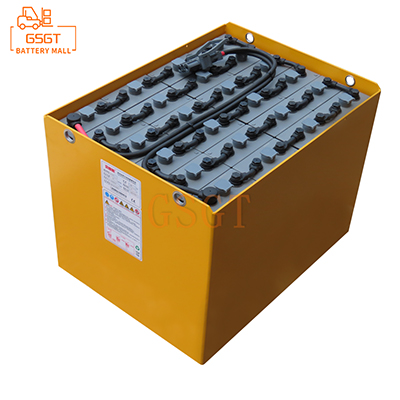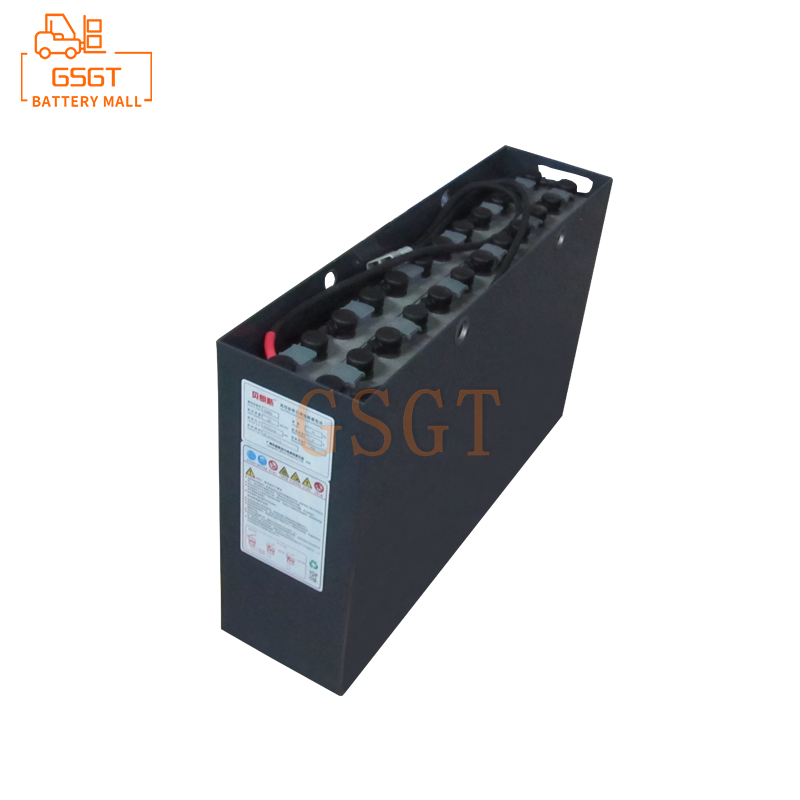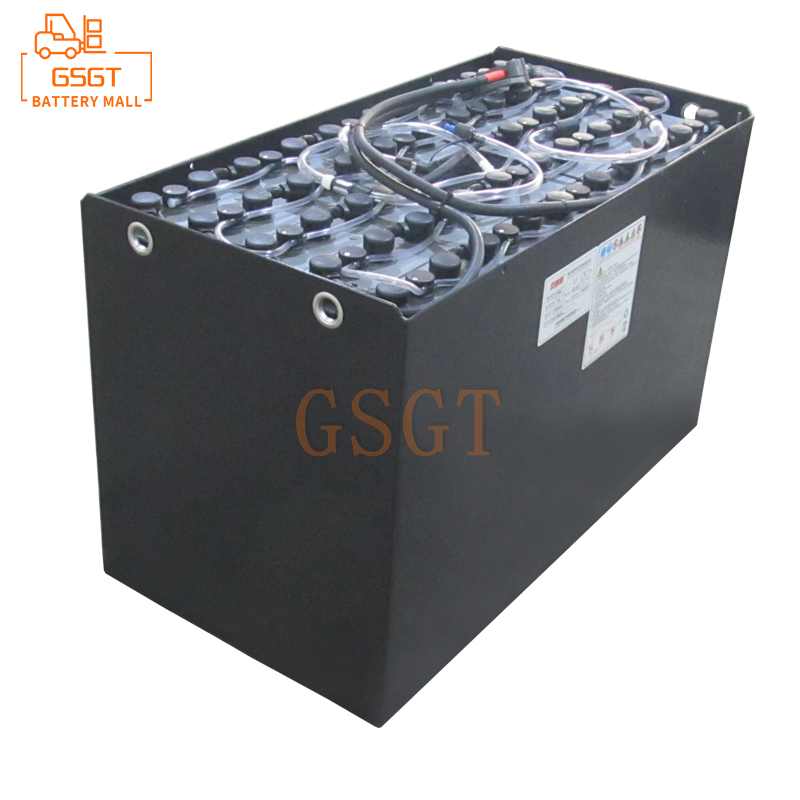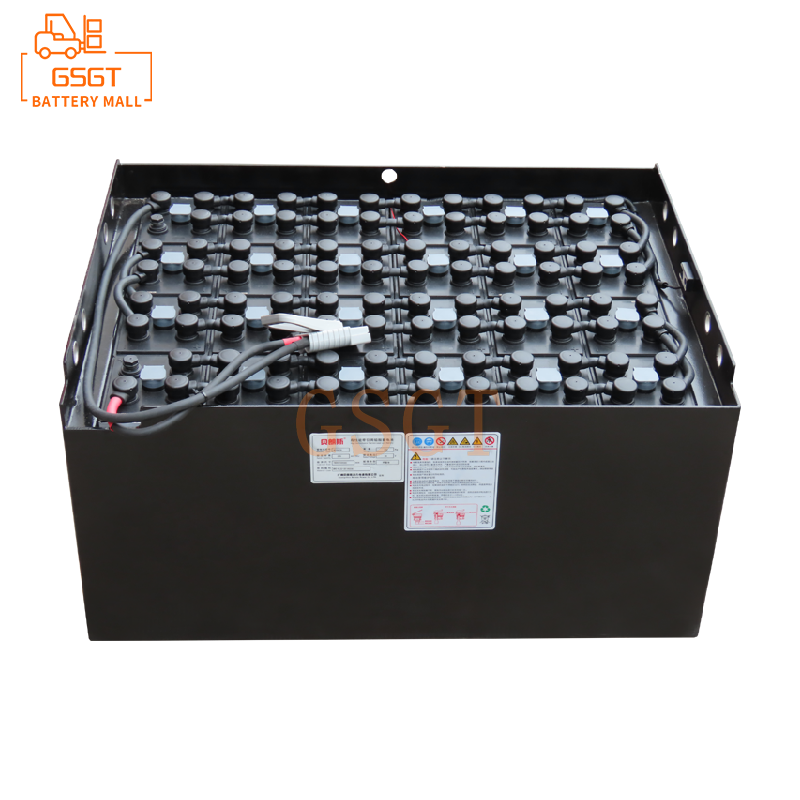Time:2025-06-12 11:08:16
Browse:645
Abstract
This article conducts an in-depth discussion on enhancing the safety of forklift lead-acid batteries, elaborately analyzes the potential safety hazards existing during the use of forklift lead-acid batteries, such as overcharging and overdischarging, thermal runaway, and electrolyte leakage, and specifically proposes improvement measures from multiple aspects including battery design optimization, charging management system upgrade, usage and maintenance norms, and personnel training. It aims to provide comprehensive and practically instructive references for ensuring the safety of forklift operations and improving the production efficiency of enterprises.
1. Introduction
In modern logistics and industrial production, forklifts, as important material handling equipment, are widely used in warehouses, ports, factories and other places. Lead-acid batteries have become the main power source for forklifts due to their advantages such as low cost, mature technology and good high-current discharge performance. However, with the increase in the frequency of forklift usage and the complexity of the working environment, the safety issues of lead-acid batteries have become increasingly prominent. Battery safety accidents not only lead to equipment damage and production interruption, but may also cause serious consequences such as fire, explosion and casualties. Therefore, it is of great practical significance to conduct in-depth research and take effective measures to enhance the safety of lead-acid batteries in forklifts.
2. Analysis of Common Safety Hazards of Lead-Acid Batteries in ForkLifts
2.1 Overcharging and overdischarging issues
Overcharging and overdischarging are common problems during the use of lead-acid batteries in forklifts. When a battery is overcharged, a large amount of heat and gas will be generated. Excessive heat will cause the internal temperature of the battery to rise sharply, accelerate the aging and corrosion of the battery plates, and reduce the service life of the battery. The hydrogen and oxygen produced, when mixed under certain conditions, can easily cause an explosion if exposed to an open flame or static spark. Excessive discharge will cause sulfation of the battery plates, forming a layer of white and hard lead sulfate crystals on the surface of the plates, blocking the pores of the plates, hindering the diffusion of the electrolyte, reducing the charging and discharging performance of the battery, and in severe cases, even making the battery unusable.
2.2 Thermal runaway phenomenon
Thermal runaway refers to the situation where, during the charging process of lead-acid batteries, due to poor heat dissipation, excessive charging current and other reasons, the internal temperature of the battery keeps rising, which enhances the battery's charging acceptance capacity and further increases the charging current. The temperature and current promote each other, forming a vicious cycle, eventually causing the battery casing to deform, crack, and even lead to a fire. After a forklift has been operating continuously for a long time, if it is immediately charged quickly and the heat dissipation system of the charging equipment is not perfect, it is easy to cause thermal runaway.
2.3 Electrolyte leakage
The main component of the electrolyte in lead-acid batteries is sulfuric acid, which is highly corrosive. Electrolyte leakage may be caused by damaged battery casing, poor sealing, or severe vibration and collision during transportation and installation. Once the electrolyte leaks, it will not only corrode the metal parts of the forklift, shorten the service life of the equipment, but also cause chemical burns to the operators. At the same time, if the leaked electrolyte enters the soil and water bodies, it will cause serious pollution to the environment.
2.4 Electrical connection failure
The electrical connections of forklift lead-acid batteries include series and parallel connections between battery packs as well as connections with the forklift's electrical system. If the connection terminals are loose or oxidized, it will lead to an increase in contact resistance, generate a large amount of heat, and even cause a fire. In addition, improper wiring methods may also lead to short-circuit faults, and the large current generated instantaneously can cause irreversible damage to the battery.
3. Measures to Enhance the Safety of Lead-Acid Batteries in Forklifts
3.1 Optimize battery design
3.1.1 Improve the material and structure of the plates
The development of new plate materials, such as using high-purity lead-calcium alloys to replace traditional lead-antimony alloys, can effectively reduce the self-discharge rate of batteries, decrease water loss, and enhance the service life and safety of batteries. Meanwhile, optimizing the structural design of the plates, increasing their surface area, and improving their porosity can enhance the utilization rate of active substances on the plates, improve the charging and discharging performance of the battery, and reduce the risk of overcharging and overdischarging.
3.1.2 Strengthen the protection of the battery casing
The battery casing is made of high-strength and corrosion-resistant engineering plastics, and reinforcing ribs are added to the casing design to enhance its impact resistance. Meanwhile, optimize the battery's sealing structure by adopting a double-sealing design or special sealant to ensure that the electrolyte will not leak when the battery is subjected to vibration or collision. In addition, setting heat dissipation slots or holes on the battery casing and using them in conjunction with cooling fans can effectively improve the battery's heat dissipation performance and reduce the possibility of thermal runaway.
3.2 Standardized Use and Maintenance
3.2.1 Establish a reasonable usage system
Enterprises should formulate scientific and reasonable usage systems based on the operation intensity of forklifts and the performance characteristics of batteries. For instance, it is stipulated that the continuous operation time of forklifts should not be too long to prevent excessive battery discharge. When the battery power remains at around 20% to 30%, it should be charged in time to prevent over-discharge. It is strictly prohibited to use forklifts in harsh environments such as high temperature and humidity to avoid affecting battery performance. At the same time, establish a forklift usage ledger, detailing information such as the usage time, charging frequency, and battery status of the forklifts, so as to facilitate the tracking management and maintenance of the batteries.
3.2.2 Strengthen daily maintenance and upkeep
Regularly inspect and maintain the lead-acid batteries of forklifts, including checking whether the battery casing is damaged, whether the electrolyte level is normal, and whether the connection terminals are loose or oxidized. Add distilled water or special electrolyte in time to keep the electrolyte level within the specified range. Clean the battery surface and connection terminals to prevent the accumulation of dust and corrosive substances. Regularly conduct charge and discharge tests on the battery to monitor its capacity and performance, and promptly identify and address potential issues.
3.2.3 Correct handling and installation
When handling and installing lead-acid batteries for forklifts, dedicated handling tools should be used to prevent the batteries from being subjected to severe vibration and collision. During the installation process, strictly follow the operating procedures to ensure that the connections between battery packs are correct and firm, and that the electrical connection terminals have good contact. At the same time, after the battery installation is completed, a comprehensive inspection of the electrical system should be carried out to ensure there are no short circuits, leakage or other faults.
3.3 Strengthen personnel training
3.3.1 Safety Operation Training
Provide professional safety operation training for forklift operators to familiarize them with the working principle, performance characteristics and safety operation procedures of forklift lead-acid batteries. The training content should include how to accurately determine the battery's power status, how to avoid overcharging and overdischarging, and how to deal with abnormal situations of the battery, etc. Through training, enhance the safety awareness and operational skills of operators and reduce safety accidents caused by human factors.
3.3.2 Maintenance and Care Training
Provide training on the maintenance and care of lead-acid batteries to the equipment maintenance personnel of enterprises, enabling them to master the daily inspection, fault diagnosis and repair skills of batteries. The training content should include the structural composition of batteries, analysis of the causes of common faults, and the usage methods of maintenance tools, etc. Through training, the professional level of maintenance personnel can be enhanced to ensure that batteries can receive timely and effective maintenance and care.
4. Conclusion
Improving the safety of lead-acid batteries in forklifts is a systematic project, which requires taking comprehensive and effective measures from multiple aspects such as battery design, charging management, usage and maintenance, as well as personnel training. By optimizing the battery design, the intrinsic performance and safety of the battery can be improved. Upgrading the charging management system to achieve intelligent charging and thermal management can effectively avoid problems such as overcharging, overdischarging and thermal runaway. Proper use and maintenance can extend the battery's service life and reduce safety risks. Strengthening personnel training and enhancing the safety awareness and professional skills of operators and maintenance personnel is an important guarantee for ensuring the safe operation of batteries. Only by organically integrating these measures can the safety of lead-acid batteries in forklifts be comprehensively enhanced, providing strong support for the safe production and efficient operation of enterprises.

$3405

$1060

$3050

$5710

MESSAGE
Professional And Efficient
Security
Affordable Price
Professional Services